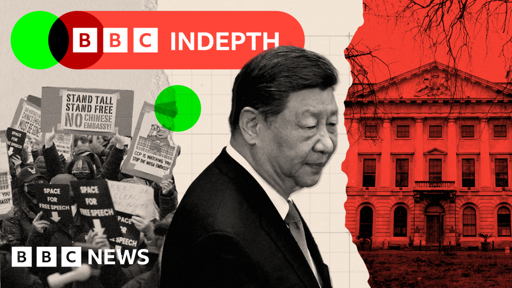cross-posted from: https://scribe.disroot.org/post/3865213
…
The new premises [where China wants to build its new embassy] , opposite the Tower of London, is already being patrolled by Chinese security guards. The building is ringed with CCTV cameras too.
“I’ve never been this close,” admits Carmen Lau.
Carmen, who is 30, fled Hong Kong in 2021 as pro-democracy activists in the territory were being arrested.
She argues that the UK should not allow China’s “authoritarian regime” to have its new embassy in such a symbolic location. One of her fears is that China, with such a huge embassy, could harass political opponents and could even hold them in the building.
There are also worries, among some dissidents, that its location - very near London’s financial district - could be an espionage risk. Then there is the opposition from residents who say it would pose a security risk to them.
The plans had previously been rejected by the local council, but the decision now lies with the government - and senior ministers have signalled they are in favour if minor adjustments are made to the plan.
The site is sprawling, at 20,000 square metres, and if it goes ahead it would mark the biggest embassy in Europe. But would it also really bring the dangers that its opponents fear?
…
In 2022, a Hong Kong pro-democracy protester was dragged into the grounds of the Chinese consulate in Manchester and beaten. British police nearby stepped over the boundary to rescue him.
…
“You know the tactics of the regime,” she says. “They were following you, trying to harass you. My friends and my colleagues were being arrested.”
Carmen fled to London but believes that she has continued to be targeted.
Hong Kong issued two arrest warrants for her alleging “incitement to secession and collusion with a foreign country or with external elements to endanger national security”.
The bounty letter sent from Hong Kong to half a dozen of her neighbours followed.
“The regime just [tries] to eliminate any possible activists overseas,” she says.
…
There is another fear, held by some opponents, that the Royal Mint Court site could allow China to infiltrate the UK’s financial system by tapping into fibre optic cables carrying sensitive data for firms in the City of London.
The site once housed Barclays Bank’s trading floor, so it was wired directly into the UK’s financial infrastructure. Nearby, a tunnel has, since 1985, carried fibre optic cables under the Thames serving hundreds of City firms.
And in the grounds of the Court, is a five-storey brick building - the Wapping Telephone Exchange that serves the City of London.
According to Prof Periklis Petropoulos, an optoelectronics researcher at Southampton University, direct access to a working telephone exchange could allow people to glean information.
…
What the neighbours think
At the back of the Royal Mint Court is a row of 1980s-built flats. Mark Nygate has lived here for more than 20 years. He gestures across his low garden wall. “Embassy staff will live there and overlook us,” he says.
“We don’t want [the embassy] there because of demonstrations, because of the security risks, because of our privacy.”
Opponents of the embassy - Hong Kongers, Tibetans, Uighurs, and opposition politicians - have already staged protests involving up to 6,000 people.
Mostly, though, he fears an attack on the embassy - that could harm him and his neighbours.
…


